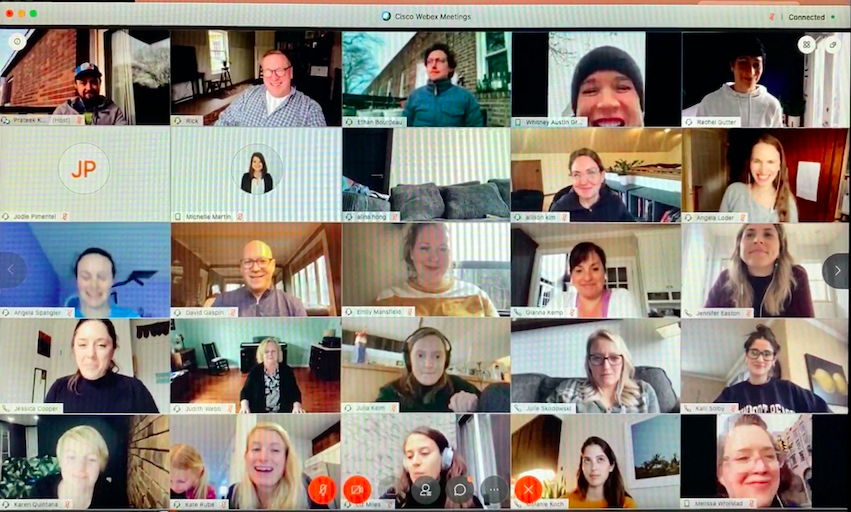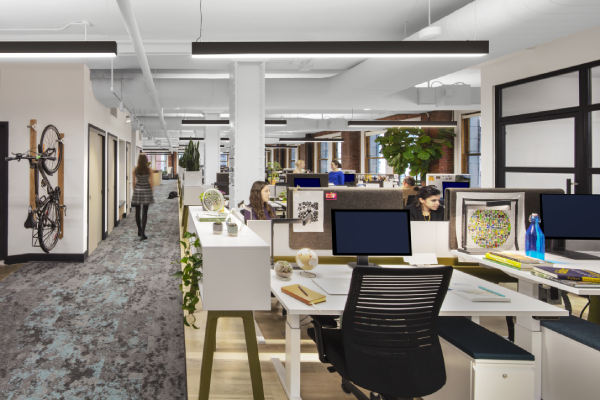Digitalization to Advance Health and Well-Being During a Moment of Crisis
Quarantines and social distancing measures across the globe are driving technology innovations in ways we couldn’t imagine just a couple just a couple months ago. Digital solutions for keeping us connected and safe are evolving rapidly to address new wants and needs. From social platforms to telemedicine, we are dependent on a host of digital solutions to support us through this unprecedented challenge.
Millions around the world are more reliant than ever on technology to stay connected both personally and professionally. In the absence of in-person engagement, online communication tools and information technologies like Zoom, Slack and WhatsApp allow us to maintain contact in a time of physical isolation, bringing together colleagues and families alike through the free-flow of information and dialogue. We have never been more connected even though we might be very far apart.
Meanwhile, we pray that technological innovations will catch up to COVID-19 – enhanced prevention, improved treatments, and eventually, a cure. Bright spots have emerged beyond the usual suspects in technology and healthcare. From car manufacturers shifting to ventilator production, to alcoholic beverage purveyors manufacturing hand sanitizer to fashion designers sewing face masks and printing protective shields, all players are welcome, all resources are needed.
At the International WELL Building Institute (IWBI) we believe that the drivers for all of this accelerated innovation and progress stem from a kind of universal imperative — an innate desire to ourselves to be healthy, for our families to be well, for our businesses to be growing, and for our communities to be thriving.
And though these might be universal desires, it is more and more apparent that “we are in the same storm, but not in the same boat.“
Emergent data indicates that the poorest people suffer the most at the hands of COVID-19. And that communities with poor air quality and higher levels of PM 2.5 (in other words, diminished air quality) have increased rates of mortality. Meanwhile, air quality across the globe, even and especially in these communities, has improved dramatically because we aren’t driving as much, building as much or occupying commercial buildings. As we bring our buildings and businesses back online, we can and must do so in a way that enhances our ability to combat the virus as opposed to diminishes it. Our buildings, our businesses and our communities can be a part of this fight if we deploy them wisely. And it’s a battle we wage for all humankind, especially those who are hardest hit, especially those who need it most.
It begins with knowledge.
That’s why we have deployed our vast community of experts and thought leaders to focus on reducing the enormous health burden from COVID-19 and other respiratory infections. The goal of the Task Force on COVID-19 and Other Respiratory Infections, which is chaired by renowned industry, academic and public health leaders from the U.S., United Kingdom, China, Singapore, Australia, the UAE and the Netherlands, is to define the critical role buildings, organizations and communities play in prevention and preparedness, resilience and recovery. Comprised of more than 500 members from virologists to property managers, ergonomists to mental health practitioners, the Task Force’s work takes a broad approach, considering interventions to address both new and recurring infectious agents that can affect large populations.
Our own pivot in the face of this crisis required us to rapidly develop and deploy a digital toolkit to enable meaningful participation and a diversity of perspective. Task Force members are already collaborating on this fast-tracked effort through a bespoke portal that serves as the hub for the work of the Task Force and allows digital crowdsourcing from a global community of experts across subject matter, ranging from air quality management and hygiene to supporting remote work, emergency preparedness and a return to the workplace.
The public health professionals at the table remind us that there is no time to waste. With that in mind, we built our online portal to facilitate dialogue across hundreds of experts, from dozens of countries, 24 hours a day over the course of a month and a half. We are confident the platform fits the purpose and will allow us to dramatically expedite the creation of the resources and guidance the industry so desperately needs. In fact, we’ve already collected hundreds of comments and unique insights from our volunteer participants.
The goals of the Task Force are two-fold. The first is to identify and develop a set of signature deliverables and resources, including guidelines for individuals, organizations and communities to help them better integrate actionable insights and proven strategies into how they manage both their buildings and their organizations. The second is to assess ways in which the WELL Building Standard (WELL) itself can be further strengthened so the system, which touches more than a half-billion square feet of space across 60 countries, can best continue to support prevention and preparedness, resiliency and recovery in this critical moment and into the future.
Only a day before we decided to close our New York City headquarters and shift our staff to a remote work scenario, we made the difficult decision to postpone our inaugural conference in Scottsdale, Arizona. Much of the content that we planned to share in-person at the conference is now being delivered to bigger and broader audiences online. We’re offering weekly educational webcasts on topics ranging from the cultivation of mental resilience in the midst of the pandemic to the role of buildings in the fight against COVID-19. By offering up this rich content online and for free, we’ve been able to educate and engage at least five times as many people as we would have at our place-based conference. Our WELL AP training, previously scheduled for Greenbuild Europe and The WELL Conference, is instead being offered as a five-part, web-based course. Three trainings in, we’ve already increased the reach of this offering by more than ten-fold. Our WELL Portfolio training for healthy building consultants and practitioners would have been enjoyed almost a hundred professionals, between events in Dublin and Scottsdale. Instead, by delivering this training online and recording the sessions so they can be enjoyed by individuals in any time zone, we’ve educated more than 500 advocates from all over the world. In moving seamlessly between online events, self-guided learning and web-based discussion forums, we’re using different digital modalities to drive interactions to drive our mission and work forward. Never in our history have we reached so many people in such a short period of time.
Though we may be apart, never before have we been more connected. And never before have we had an opportunity of this magnitude to restore the lost connections from person to person and between people and planet. Never before have we been more dependent on one another and our collective good behavior. Never before have we been more vulnerable to nature and its good graces. Together we can harness the power of digital technologies to develop and deploy new tools, resources and insights in pursuit of transformation and in pursuit of our abiding belief that everyone deserves to live, work, learn and play in safe places where they can thrive.
This article was written by Rachel Gutter, President of the International WELL Building Institute (IWBI).



